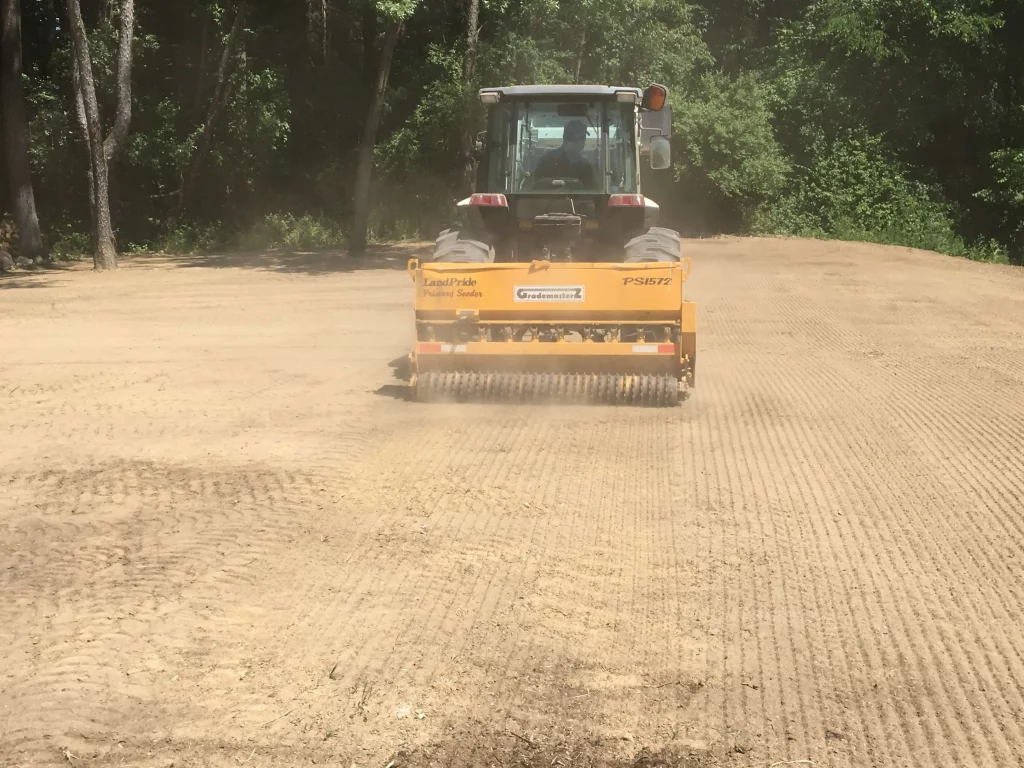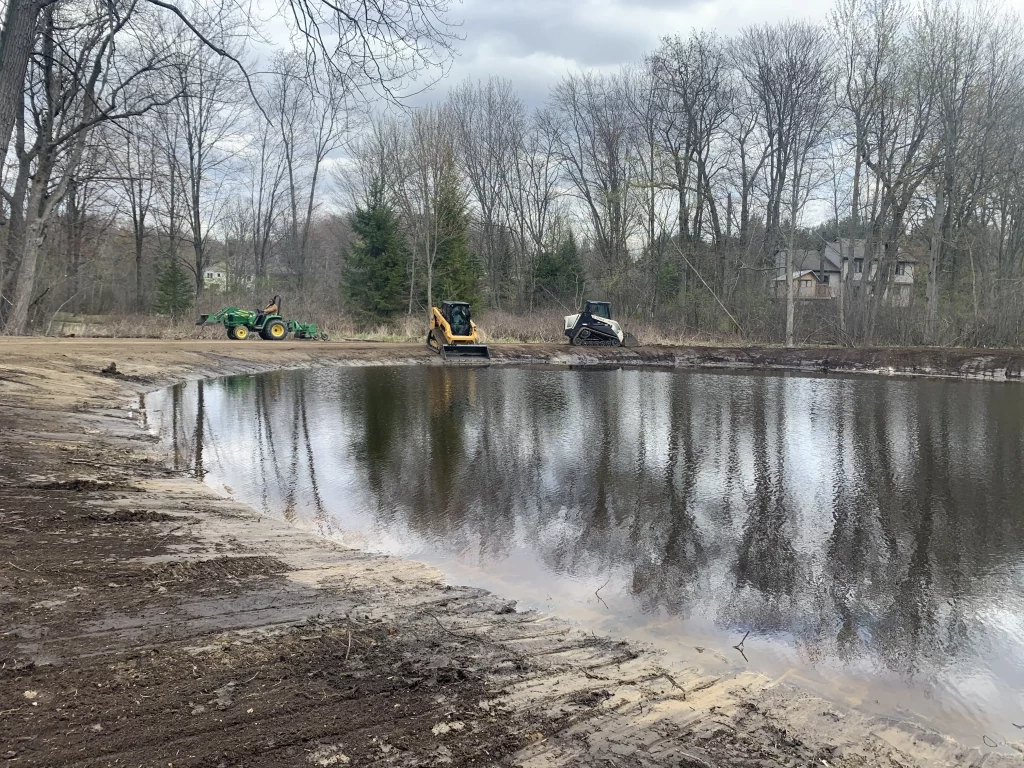Are you struggling with persistent water pooling or yard drainage? lets discuss some potential issues in our in-depth guide on drainage solutions, where you’ll find essential information to address and prevent water-related issues in your backyard.
A house is indeed all those things and more — an embodiment of security, comfort, and the promise of future memories. It’s a significant investment, not just financially, but emotionally and practically too. When seeking a house, we prioritize features like location, structural integrity, functionality, and amenities such as a spacious kitchen and adequate bathrooms. Yet, amidst these considerations, the importance of backyard drainage often goes unnoticed.
Backyard drainage, or yard drainage, is pivotal for managing water flow within the property. It safeguards against flooding, erosion, and damage to the landscape and structures. However, it’s an aspect that’s frequently overlooked during the house-hunting process. Homeowners may find themselves grappling with soggy, unusable yards after moving in, despite assurances from inspectors during the purchasing phase.
In Michigan, where the climate can be unpredictable, the need for effective yard drainage is particularly crucial. Without proper drainage, yards can become waterlogged and impractical for use. This oversight underscores the necessity of thoroughly assessing all aspects of a property before making a purchase decision.
Investing time and attention in evaluating backyard drainage ensures that your home remains a haven, not just indoors, but outdoors as well. It’s about creating a space where you can truly enjoy and make the most of every moment, without the worry of water-related issues dampening your experience.
What is Backyard Drainage?
Backyard drainage refers to the management and control of water flow within a yard or outdoor area. Proper drainage is essential to prevent issues such as flooding, erosion, and water damage to structures or landscaping. There are various methods for achieving effective drainage, including:
1. Grading
Ensuring that the ground slopes away from structures and toward appropriate drainage areas, such as swales, ditches, or storm drains.
2. French Drains
Ditches are dug manually or by a trencher. An inclination of 1 in 100 to 1 in 200 is typically. Lining the bottom with clay or plastic pipe ensure effective water flow. These are trenches filled with gravel or rock and containing perforated pipes that redirect water away from an area.
3. Surface Drains
These are grated openings or catch basins installed at ground level to collect surface water and direct it into underground drainage systems or other designated areas.
4. Dry wells
These are underground structures designed to collect and disperse excess water into the soil gradually. Dry wells are holes dug into the ground that are filled with gravel. They collect and store rainwater, which slowly seeps into the ground. So, dry wells are a good option for yards with clay soil or where there is a lot of rain.
5. Rain gardens
Landscaped areas with plants and vegetation specifically chosen for their ability to absorb water and improve drainage.
6. Sump Pump
Installed sump pump in the yard helps you preventing excessive water from yard effectively.
Lets go over all these forms of Yard Drainage
Grading

The first and foremost step involved with drainage issues is as simple as Grading; Proper grading plays a crucial role in ensuring effective yard drainage, especially in areas like Michigan where weather conditions can vary greatly. Here’s how proper grading helps ensure proper drainage:
- Promotes Water Flow: Grading involves shaping the land so that it slopes away from the house or other structures, directing water towards designated drainage areas such as swales, ditches, or storm drains. This slope allows water to flow naturally away from the property, preventing pooling and potential water damage.
- Prevents Water Accumulation: By creating a gentle slope, proper grading helps prevent water from accumulating near the foundation of the house or in low-lying areas of the yard. Accumulated water can lead to moisture problems, soil erosion, and structural damage over time.
- Reduces Soil Erosion: Grading helps to stabilize the soil by preventing erosion caused by water runoff. When soil erodes, it can create uneven surfaces and expose roots, leading to potential safety hazards and landscape damage.
- Aids in Landscaping: Proper grading provides a stable base for landscaping features such as gardens, lawns, and plant beds. It ensures that these areas are adequately drained, promoting healthy plant growth and minimizing the risk of water-related issues such as root rot.
Grading New Construction Houses and Finished Grading
We work on over a hundred new construction sites every year. We come across clients that insist that their landscaper specifically instructed them no soil is needed for the grading, or the builder will provide a grade and no soil necessary.
Construction sites in Michigan can compact the soil through various activities and processes involved in the construction process. Construction sites typically involve the use of heavy machinery such as excavators, bulldozers, and compactors. These machines exert significant pressure on the soil as they move and operate, causing compaction, especially in areas where they repeatedly traverse. let’s discuss a few factors contributing soil compaction.
Factors Contributing Soil Compaction
- Excavation for building foundations involves digging into the soil to create space for the foundation. This process can disturb the natural soil structure and lead to compaction around the excavated areas.
- During construction, materials such as gravel, sand, and construction debris may be stockpiled on the site. The weight of these materials can compress the underlying soil, leading to compaction.
- Construction vehicles, trucks, and workers’ vehicles moving on the site can also contribute to soil compaction, particularly in areas where there is frequent traffic or parking.
- Grading activities to level the site and earthworks to reshape the terrain can involve the use of heavy equipment and machinery, which can compact the soil as they operate.
These activities can lead to varying degrees of soil compaction depending onmultiple factors such as the type of soil, moisture content, duration of construction activities, and the weight and frequency of heavy equipment usage.
Soil compaction is a common concern in construction projects, and mitigating measures such as proper soil preparation, during the final grade – breaking down the soil three to four inches, mixing in organic matter, mixing in top soil to ensure the long-term stability and performance of the constructed infrastructure is something that should be provided.
Poor Drainage
Without topsoil, the soil composition may lack the necessary organic matter and nutrients to promote proper drainage. This can result in water pooling on the surface, creating soggy conditions and potential water damage to the property.
- Compacted Soil: Construction activities often compact the soil, reducing its ability to absorb and drain water effectively. Without topsoil to replenish and aerate the soil, compaction can worsen, exacerbating drainage problems.
- Increased Erosion: Topsoil acts as a protective layer against erosion. Without it, the underlying soil may be more susceptible to erosion from rainfall and runoff, leading to landscape degradation and potential sedimentation in nearby water bodies.
Overall, the absence of topsoil during final grading in new constructions can result in long-term drainage issues, reduced landscaping potential, and increased maintenance requirements. Proper grading techniques, coupled with the use of quality topsoil, are essential for creating sustainable and resilient landscapes in Michigan and beyond.
Sump Pump
A sump pump yard drainage system involves the use of a sump pump to manage excess water in a yard or property. This system typically consists of a sump pit, a sump pump, and a network of pipes and outlets to divert water away from the area.
Here’s how it generally works:
- Sump Pit: A sump pit, also known as a sump basin, is a hole dug into the ground where excess water collects. The pit is typically located in the lowest part of the yard or basement.
- Sump Pump: A sump pump is installed inside the sump pit. When the water level in the pit reaches a certain point, the sump pump activates and pumps the water out of the pit.
- Piping: The sump pump is connected to a network of pipes that carry the water away from the property. These pipes may discharge the water into a drainage ditch, a storm drain, or another designated area where it can safely drain away from the yard.
Sump pump yard drainage systems are especially useful in areas prone to flooding or where the water table is high. They help prevent water damage to basements, crawl spaces, and foundations by efficiently removing excess water from the property. Proper maintenance of the sump pump and periodic inspection of the yard drainage system are essential to ensure its effectiveness in managing yard drainage.
Note: This article is written from a perspective of Michigan Soil. Perhaps, what works here may not work in Colorado for example, however the concept is the same.
Final Words
Proper drainage protects your property and the environment by reducing erosion and pollution. With a little planning and the right solution, you can say goodbye to backyard blues and hello to a healthy, happy yard that thrives, rain or shine! Remember, a healthy yard starts with healthy drainage. So, do it yourself and grab your shovel, or take assistance from yard drainage contractors.
Contact Us today and get solutions tailored to your needs and transform your backyard into a haven that thrives through every Michigan season. Happy draining!
Frequently Asked Questions
What are the solutions to fix drainage or standing water?
You have probably heard of terms – French drains, trench drains, Dry wells, Grading, fixing negative slope, Sump pump drain installations, channel drains etc. All these are potential solutions to achieving the best solution for removing standing water from the back yard.
What are the reasons of drainage issues?
Drainage issues can arise from standing water in the yard or near the foundation, as well as inadequate slope or grading, hindering proper water permeation.
What steps should be taken, if the drainage issue persists despite initial efforts to resolve it?
If the issue persists drainage issues, it can compromise the foundation and leads to costly repairs. It’s advisable to consult with a professional landscaper or drainage specialist who can assess the situation and recommend appropriate solutions to effectively address the problem.
What is Sump Pump and how does it works?
A sump pump is a device, used to remove excess water from the lowest part of a structure’s foundation. It consists of a pump placed in a pit or sump basin, where water naturally collects. When the water level rises to a certain point, a float switch triggers the pump to turn on, pumping the water out of the pit and away from the building through a discharge pipe or hose. This helps preventing flood and water damage to the structure.
What is grading a yard means?
Grading a yard is a form of yard leveling that creates a mild incline. It involves creating a slight slope away from the foundation to facilitate water drainage. This helps prevent water from pooling around the foundation, reducing the risk of water damage.


